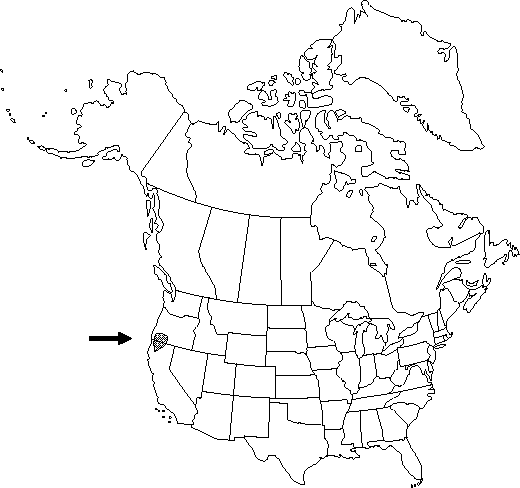familyRanunculaceae
genusRanunculus
subgenusRanunculus subg. Ranunculus
sectionRanunculus sect. Ranunculus
speciesRanunculus occidentalis
Difference between revisions of "Ranunculus occidentalis var. howellii"
Pittonia 3: 14. 1896.
Endemic
Treatment appears in FNA Volume 3.
FNA>Volume Importer |
imported>Volume Importer |
||
| (7 intermediate revisions by 2 users not shown) | |||
| Line 20: | Line 20: | ||
}}<!-- | }}<!-- | ||
| − | --><span class="statement" id="st- | + | --><span class="statement" id="st-undefined" data-properties=""><b>Stems </b>erect to reclining, 1-3 mm thick, hirsute or sometimes glabrous. <b>Basal</b> leaf blades 3-parted, ultimate segments narrowly elliptic, margins entire or dentate. <b>Flowers</b>: sepals 5, 4-6 mm; petals 5-6, 6-10 × 3-5 mm. <b>Achenes</b> 3.4-4.8 × 2.6-3.2 mm, glabrous; beak lanceolate, straight, 1.6-2.2 mm.</span><!-- |
-->{{Treatment/Body | -->{{Treatment/Body | ||
| Line 27: | Line 27: | ||
|elevation=900-1400 m | |elevation=900-1400 m | ||
|distribution=Calif.;Oreg. | |distribution=Calif.;Oreg. | ||
| − | |discussion=<p>Ranunculus occidentalis var. howellii, R. occidentalis var. dissectus, and R. austro-oreganus form a distinctive group distinguishable in the R. occidentalis complex by the straight achene beak. They may be difficult to separate, however; further study of their relationships is needed.</p> | + | |discussion=<p><i>Ranunculus occidentalis </i>var.<i> howellii</i>, <i>R. occidentalis </i>var.<i> dissectus</i>, and <i>R. austro-oreganus</i> form a distinctive group distinguishable in the <i>R. occidentalis</i> complex by the straight achene beak. They may be difficult to separate, however; further study of their relationships is needed.</p> |
|tables= | |tables= | ||
|references= | |references= | ||
| Line 36: | Line 36: | ||
-->{{#Taxon: | -->{{#Taxon: | ||
name=Ranunculus occidentalis var. howellii | name=Ranunculus occidentalis var. howellii | ||
| − | |||
|authority=Greene | |authority=Greene | ||
|rank=variety | |rank=variety | ||
| Line 51: | Line 50: | ||
|publication year=1896 | |publication year=1896 | ||
|special status=Endemic | |special status=Endemic | ||
| − | |source xml=https:// | + | |source xml=https://bitbucket.org/aafc-mbb/fna-data-curation/src/2e0870ddd59836b60bcf96646a41e87ea5a5943a/coarse_grained_fna_xml/V3/V3_612.xml |
|genus=Ranunculus | |genus=Ranunculus | ||
|subgenus=Ranunculus subg. Ranunculus | |subgenus=Ranunculus subg. Ranunculus | ||
| Line 57: | Line 56: | ||
|species=Ranunculus occidentalis | |species=Ranunculus occidentalis | ||
|variety=Ranunculus occidentalis var. howellii | |variety=Ranunculus occidentalis var. howellii | ||
| − | |||
| − | |||
| − | |||
| − | |||
| − | |||
| − | |||
| − | |||
| − | |||
| − | |||
| − | |||
| − | |||
| − | |||
| − | |||
| − | |||
| − | |||
| − | |||
| − | |||
}}<!-- | }}<!-- | ||
-->[[Category:Treatment]][[Category:Ranunculus occidentalis]] | -->[[Category:Treatment]][[Category:Ranunculus occidentalis]] | ||
Latest revision as of 21:50, 5 November 2020
Stems erect to reclining, 1-3 mm thick, hirsute or sometimes glabrous. Basal leaf blades 3-parted, ultimate segments narrowly elliptic, margins entire or dentate. Flowers: sepals 5, 4-6 mm; petals 5-6, 6-10 × 3-5 mm. Achenes 3.4-4.8 × 2.6-3.2 mm, glabrous; beak lanceolate, straight, 1.6-2.2 mm.
Phenology: Flowering spring–summer (Apr–Jul).
Habitat: Meadows
Elevation: 900-1400 m
Discussion
Ranunculus occidentalis var. howellii, R. occidentalis var. dissectus, and R. austro-oreganus form a distinctive group distinguishable in the R. occidentalis complex by the straight achene beak. They may be difficult to separate, however; further study of their relationships is needed.
Selected References
None.
Lower Taxa
None.
